Learn Japanese using JLPT syllabus
Home | Kanji | Japanese words | Japanese writing system: Hiragana and Katakana
Complete Katakana
Once you have learnt the Basic Katakana, let us look into advanced or complete Katakana alpabhets.
Download POSTERS of Katakana Chart - In high resolution JPG and PDF formats.
Stick them on your desk or door or walls and check them out every now and then.
This is the Advanced Katakana chart. Download
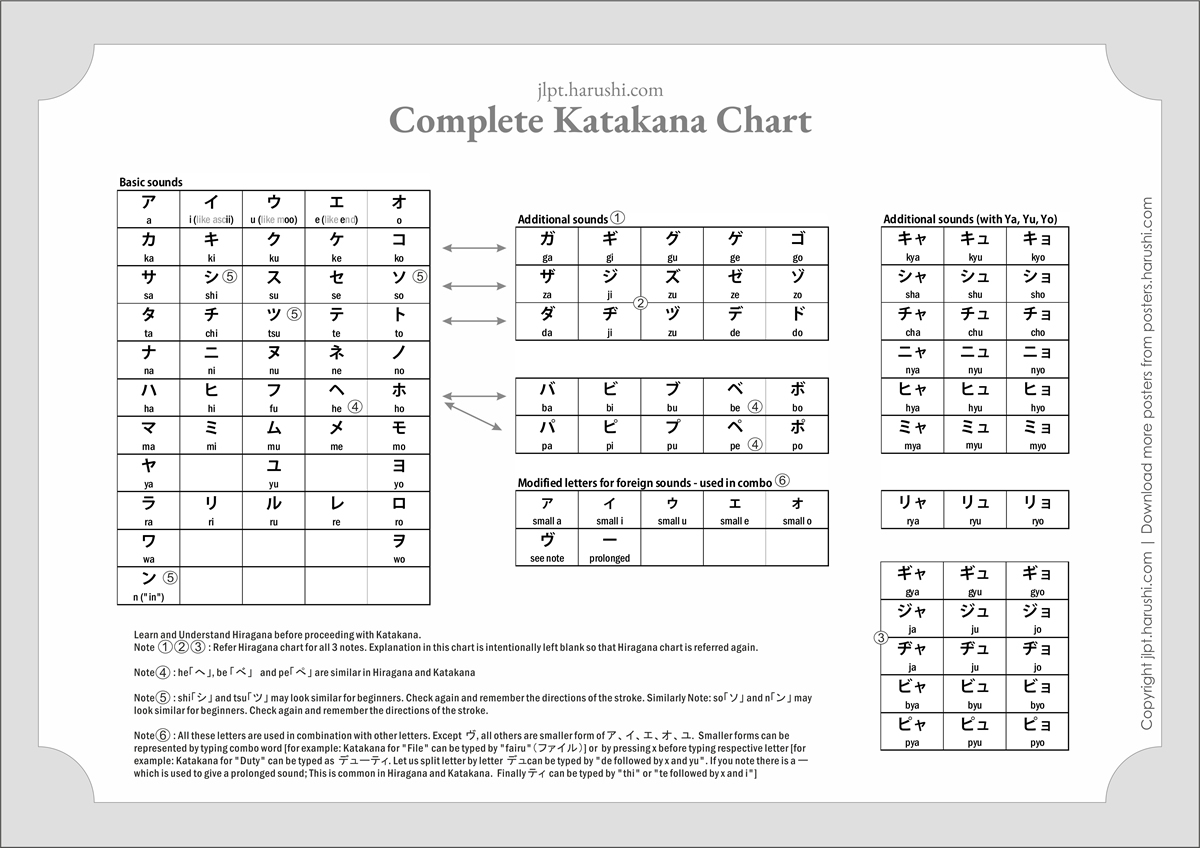
This complete Katakana chart is explained below:
Note: he「へ」, be 「べ」 and pe「ぺ」 are similar in Hiragana and Katakana
Note: shi「シ」 and tsu「ツ」 may look similar for beginners. Check again and remember the directions of the stroke.
Note: so「ソ」 and n「ン」 may look similar for beginners. Check again and remember the directions of the stroke.
In the Basic Katakana Chart, we learned that they are called Gojuon - the 50 Sounds.
Now, let us see more additional sounds - Dakuon, Han-dakuon and Yoon.
As you can note from the Basic Katakana Chart, ON stands for SOUND.
Dakuon sounds are additional sounds to the basic Katakana set - Gojuon.
Additional sounds are represented by adding " to the basic sounds of Ka, Sa, Ta and Ha series making Ga, Za, Da and Ba series.
Dakuon chart:
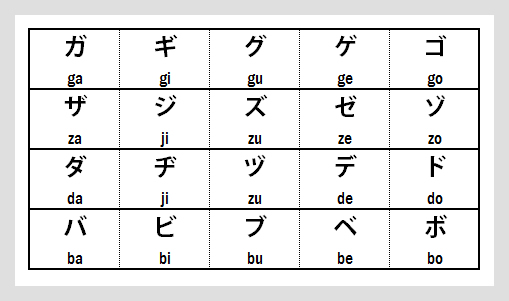
Only for Ha/Ba series, one more set of additional sounds created by adding a degree sign instead of ", making Pa series. This is called Han Dakuon. Refer the chart below.
Han Dakuon chart:

Yoon sounds are formed by adding "Ya, Yu, Yo" to the Basic Sounds "Ki, Shi, Chi, Ni, Hi, Mi, Ri"
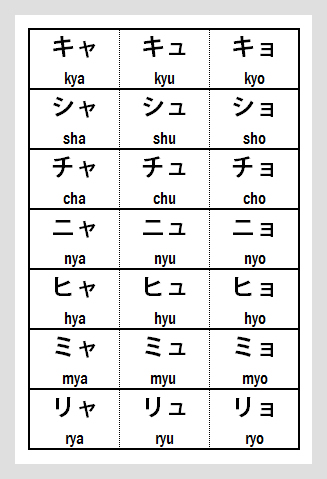
and Yoon sounds are formed by adding "Ya, Yu, Yo" to the Dakuon and Han-dakuon sounds "Gi, Ji, Ji, Bi, Pi"
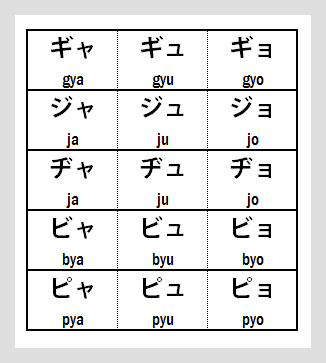
In Katakana, since it is used for representing foreign words, we have to incorporate alphabets for more sounds. So a combination of alphabets are used like the ones below.
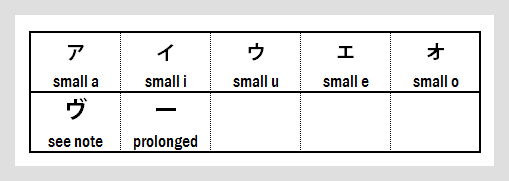
Note: All these letters are used in combination with other letters. Except ヴall others are smaller form of ア、イ、エ、オ、ユ.
Smaller forms can be represented by typing combo word
For example: Katakana for "File" can be typed by "fairu"(ファイル)
This example shows how "small a" can be typed by a combo "fa"
or
by pressing x before typing respective letter
For example: Katakana for "Duty" can be typed as デューティ.
Let us split letter by letter デュcan be typed by "de followed by x and yu".
If you note there is a ーwhich is used to give a prolonged sound;
This is common in Hiragana and Katakana. Finally ティ can be typed by "thi" or "te followed by x and i"
Click the below thumbnail to Download Katakana Chart - Posters in High resolution JPG and A3 size PDF available
Or
These posters are available in JPG and PDF format.
NOTES:
The letters are ordered from left to right as that is how modern Japanese text and reading materials are written. Traditionally the chart will have letters ordered from top to bottom and right to left. So in case if you come across a chart like top to bottom or right to left, do not get surprised.
TIPS:
As you can note again, remember to split up Japanese words to understand the formation and meaning.
For example: by understanding the above you know jyu stands for 10. Let us say, you have learned NI is for Two. Now you can make 20 by combining Ni + Jyu = NiJyu.

